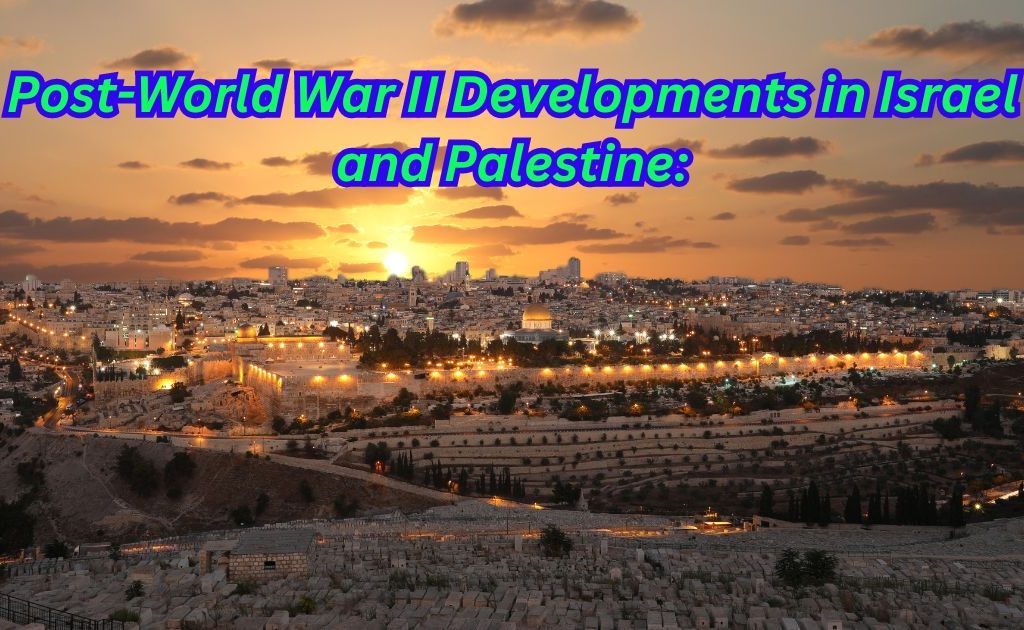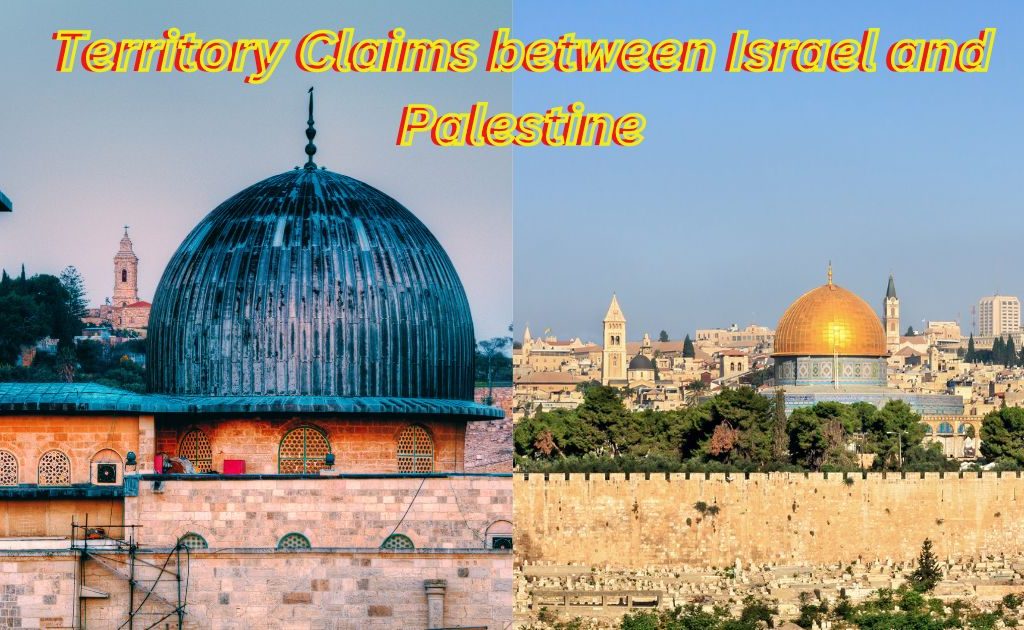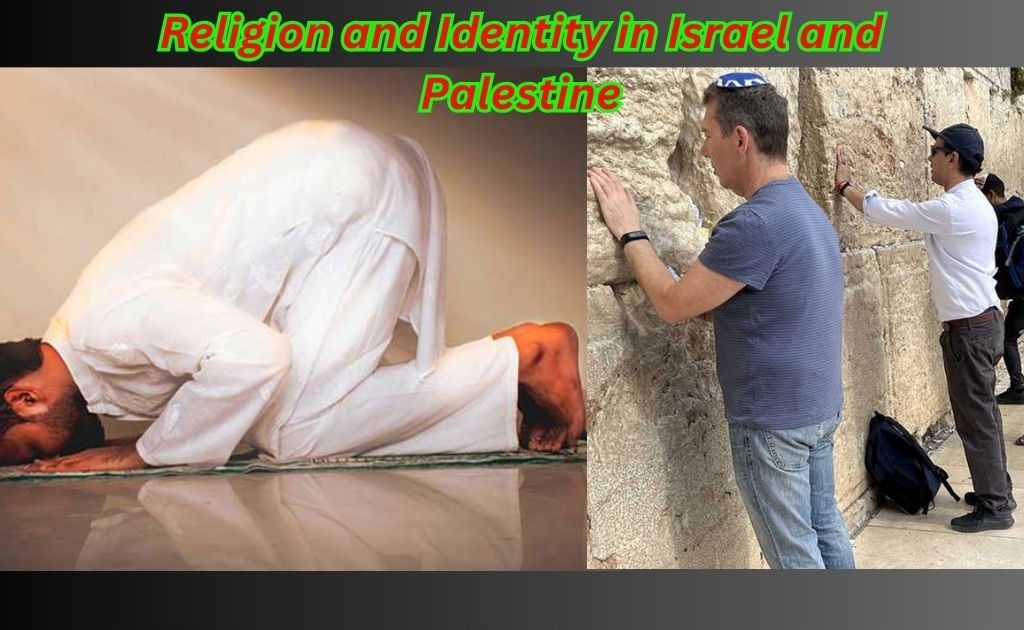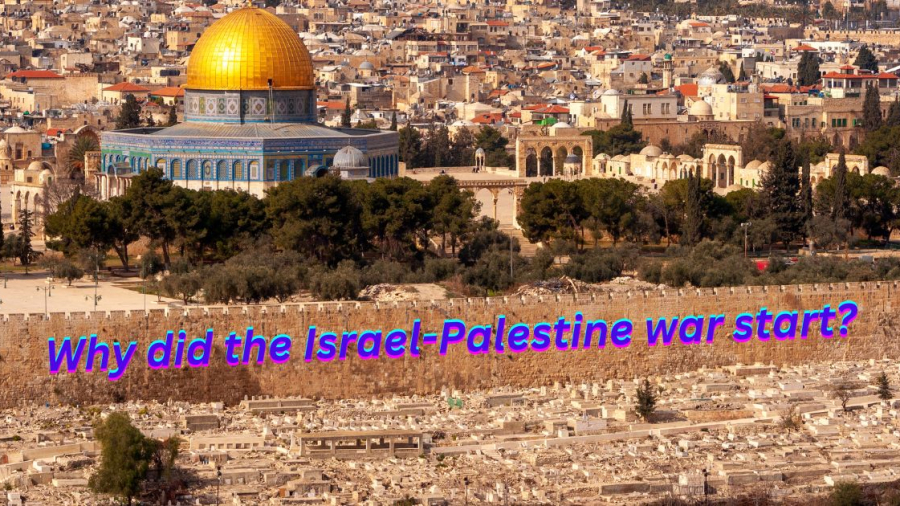The conflict between Israel and Palestine has deep historical origins and is a complicated, ongoing problem. It is important to remember that the conflict did not start out as a single war but rather developed over time as a result of many confrontations, disagreements, and tensions. The following is a quick summary of the main causes of the conflict:
Background to Israel-Palestine history:
The complicated historical context of the Israel-Palestine war armed conflict stretches back more than a century. The following is a succinct summary of the major historical occurrences and trends that have influenced the conflict:
Late 19th Century: When the Jewish and Arab national movements first appeared in what was then known as Palestine, which was a part of the Ottoman Empire, the conflict’s origins may be found there. Jewish immigration to Palestine began during this period as a result of Zionist ambitions and the desire to establish a Jewish state.
Balfour Declaration (1917): The British government published the Balfour Declaration (1917) in favor of the creation of a “national home for the Jewish people” in Palestine during World War I. The foundation for Jewish immigration to the area was established by this proclamation.
British Mandate (1920–1948): Following World War I, Britain was given command over the Israel–Palestine conflict by the League of Nations. Due to competing national goals, tensions between the Arab and Jewish populations grew throughout this period. The British found it difficult to keep the two parties at peace.
United Nations Partition Proposal (1947): The United Nations put up a partition proposal for Palestine in 1947, suggesting that the territory be divided into distinct Arab and Jewish nations, each with its capital located in Jerusalem. The proposal was approved by Jewish officials but rejected by Arab ones, which resulted in the outbreak of the first Arab-Israeli conflict in 1948.
1948 Arab-Israeli War: This conflict, also referred to as the War of Independence or the Nakba (catastrophe), saw the creation of the State of Israel in 1948. During this battle, hundreds of thousands of Arab Palestinians were forced to flee Following the 1967 Six-Day War, Israel and Palestine seized control of the West Bank, Gaza Strip, and East Jerusalem. These areas continue to be the major source of disagreement in the war.
Settlements: One of the main points of contention has been Israel’s construction of settlements in the occupied areas, especially in the West Bank. These settlements are seen by many in the international community as being against international law.
Oslo Accords (1990s): To create a foundation for Palestinian self-governance in the West Bank and Gaza Strip, a number of accords between Israel and the Palestine War Liberation Organization (PLO) were reached. But the peace effort was beset with many problems and eventually collapsed.
Conflict Still Ahead: The Israel-Palestine conflict is still marked by sporadic acts of violence, disagreements over politics, and discussions. Unresolved issues include boundaries, Jerusalem’s status, Palestinian refugees’ right of return, and security concerns.
The lengthy history of the Israeli-Palestinian conflict is characterized by complex geopolitical factors combined with a fierce struggle for national identity, territory, and self-determination. It’s a really delicate and personal matter, and finding a solution is still quite difficult.

Post-World War II Developments in the Israel-Palestine War:
The circumstances that followed World War II significantly influenced the nature of the Israel-Palestine conflict. During this time, the following significant occurrences and advancements occurred:
UN Partition Proposal of 1947: The UN put up a proposal in 1947 to divide Palestine into Jewish and Arab governments, with Jerusalem falling under international supervision. The idea, backed by the Jewish administration, was rejected by Arab leaders in 1948, sparking the first Arab-Israeli conflict. 1948 saw the founding of the State of Israel, which was announced on May 14 by David Ben-Gurion, the country’s first prime minister. Israel gained independence as a consequence of the 1948 Arab-Israeli War, which was sparked by this proclamation.
Arab-Israeli disputes: After Israel was founded, there were other Arab-Israeli hostilities, including the Suez Crisis (1956), the Yom Kippur War (1973), and the Six-Day War (1967). The Israel-Palestine war and the surrounding area were greatly impacted by these battles.
Occupation of Territories: As a result of the 1967 Six-Day War, Israel came to control the Gaza Strip, East Jerusalem, and the West Bank. This profession continues to be a major point of contention.
Palestinian Liberation Movement: The Palestine Liberation Organization (PLO), led by Mahmoud Arafat, gained notoriety as a political and military force in the Palestinian context. It engaged in military conflict with Israel in an effort to promote Palestinian interests. Various peace efforts have been started throughout the years to settle the Israel-Palestine issue. Though nothing has been accomplished, the Camp David Accords of 1978 and the Oslo Accords of the 1990s sought to provide a framework for Palestinian self-governance and a two-state solution.
Settlement Expansion: Following the 1967 war, Israel built more settlements in the West Bank and East Jerusalem, which increased tension and caused disagreements with the Palestinians and the international community. A lot of people believe that these agreements violate international law.
Intifadas: The First Intifada (1987–1993) and the Second Intifada (2000–2005) were two Palestinian uprisings that signaled times of intense discontent and bloodshed in the occupied territories.
Security Barrier: In the early 2000s, Israel built a security barrier in the West Bank, sometimes known as the “West Bank barrier” or the “separation barrier.” Israel argues that it is required for security, while the Palestinians see it as a land grab and a barrier to peace.
Disengagement from the Gaza Strip (2005): Israel unilaterally left the Gaza Strip in 2005, removing its armed forces and settlements. Nonetheless, a siege results from Israel’s continued control over Gaza’s borders, airspace, and coastal seas.
The continuous conflict between Israel and Palestine, which is marked by territorial disputes, political tensions, and recurrent bloodshed, has been exacerbated by these post-World War II events. The war continues to be a deeply entrenched and complicated problem that affects both the area and international relations.
Israel-Palestine Refugee Crisis and Displacement:
The conflict between Israel and Palestine revolves on the problem of displacement and refugees, which has had a significant and enduring effect on the area. An outline of the refugee crisis and displacement within the framework of the war is provided below:
1948 Arab-Israeli War (Nakba): Thousands of Palestinian Arabs were forced to flee their homes as a consequence of the 1948 Arab-Israeli War, sometimes referred to as the War of Independence. This incident is often known as the “Nakba,” which translates to “catastrophe” in Arabic. Numerous Palestinians were compelled to leave their homeland and seek safety abroad.
Palestinian Refugees: Following the Nakba, a sizable number of Palestinians fled their homeland, first seeking safety in the West Bank and Gaza Strip, as well as in surrounding Arab nations. The population of Palestinian refugees and those descended from them has significantly increased over time.
United Nations Relief and Works Agency (UNRWA): In 1949, the UN created UNRWA, the United Nations Relief and Works Agency for Palestine Refugees in the Near East, in response to the refugee crisis. UNRWA offers Palestinian refugees in the area healthcare, education, humanitarian aid, and other services.
Right of Return: The Palestinian demand for the right of refugees to return to their native homes is one of the most divisive topics in the war. Israel rejects the Palestinians’ claims that they have a moral and legal right to return to their pre-1948 homes because they believe that doing so will change the state’s Jewish and demographic makeup.
Persistent Displacement: The conflict has resulted in waves of refugees and displacement in later wars and conflicts, including the Israeli-Palestinian conflict that is still going on, the 1967 Six-Day War, and the 1970 Black September crisis in Jordan.
Impact of Generations and Diaspora: The descendants of Palestinian refugees are dispersed across the Middle East and beyond. For many decades, the Palestinian identity and sense of national legacy have been significantly impacted by the refugee crisis.
International Efforts: A crucial element of any prospective peace deal is the Palestinian refugee question. Numerous peace efforts and discussions have looked at a range of options, including reparations, relocation, and restitution to a future Palestinian state.
One of the most delicate and difficult aspects of the Israel-Palestine war is still the Palestinian refugee question. It is one of the most intricate and sensitive parts of the dispute since it deals with questions of historical justice, identity, and sovereignty. Every real peace deal between Israel and the Palestinians must address the refugee issue.

Territory Claims between Israel and Palestine:
One of the main focuses of the Israel-Palestine war is territorial issues. The control and sovereignty of certain lands in the region are at the center of these issues. The following are the main areas of contention for territory:
West Bank: The region that Israel and Palestine seized from Egypt during the 1967 Six-Day War is also known as Samaria or Judea. It has a sizable Palestinian community as well as major historical and religious sites that are vital to Muslims and Jews alike. The construction of Israeli settlements in the West Bank has generated considerable controversy. One of the main points of contention in peace talks is whether and how the West Bank will be included in a future Palestinian state.
Gaza Strip: A heavily populated coastal region that has often been the scene of warfare, the Gaza Strip was also taken by Israel and Palestine during the 1967 Palestine War. Israel withdrew its armed forces and settlements from Gaza unilaterally in 2005, but it still controls the territory’s borders, airspace, and coastal seas. Gaza’s political and security climate is still quite unstable.
East Jerusalem: In 1967, Israeli forces took control of the Old City and other parts of Jerusalem’s eastern district. While Israel claims authority over the whole city, Palestinians want East Jerusalem as the capital of a future Palestinian state. Jerusalem’s status is a very delicate and divisive topic.
Boundaries: There has been discussion and dispute on the demarcation of potential Palestinian state boundaries as well as the necessary geographical changes to suit the populations of Israel and Palestine. Such a state’s boundaries would be crucial to the security and sustainability of the Israel-Palestine conflict.
Security Barrier: In the early 2000s, Israel built a security barrier in the West Bank, sometimes known as the “West Bank barrier” or the “separation barrier.” While the Palestinians see it as a roadblock to their freedom of movement and a land grab, Israel contends that it is vital for security in order to avert terrorist attacks.
Settlements: One of the main points of disagreement has been the establishment of Israeli settlements in the West Bank and East Jerusalem. Israel contests the view held by many in the international community, including the UN, that Israeli settlements are unlawful under international law.
Jordan Valley: Because of its strategic importance, the West Bank’s Jordan Valley has drawn attention. For security reasons, Israel has attempted to keep a military presence in this region, while the Palestinians see it as a necessary component of their future state.
The political, security, and cultural aspects of the Israel-Palestine conflict are intricately linked to territorial conflicts. Any prospective peace deal would face a significant obstacle in resolving these conflicts, which would require balancing the conflicting national objectives of Israelis and Palestinians with maintaining regional security and stability.
Palestine-Israeli Settlements:
One of the main and most divisive aspects of the Israel-Palestine war is the question of Israeli settlements in the West Bank and East Jerusalem. “Israeli settlements” are communities established by Israelis, mostly in the West Bank and East Jerusalem, in areas they overran during the 1967 Six-Day War. Important details about settlements are as follows:
Expansion of Settlements: Israel has created and grown a large number of settlements in the West Bank and East Jerusalem since 1967. These communities range in size and population from tiny encampments to bigger metropolises. Tension in the war has arisen from their building.
International Law: The Fourth Geneva Convention, which forbids the transfer of an occupying power’s civilian population into territory it occupies, is cited by many in the international community, including the United Nations, as justification for Israeli settlements in the occupied Palestinian territories.
Security Concerns: According to Israel, some of the settlements are strategically placed for security purposes, and their existence aids in preserving control over regions it considers essential to its security. But these settlements are seen by Palestinians and a large portion of the international community as a roadblock to peace and the creation of a Palestinian state.
Impact on Palestinian areas: The establishment of a contiguous and independent Palestinian state has become increasingly difficult as a consequence of the displacement of Palestinians from their land and the fragmentation of Palestinian areas caused by settlement development. Additionally, Palestinians contend that mobility and resource access are restricted by settlements, their infrastructure, and related security measures.
Israeli Government Policy: Different Israeli governments have followed different settlement programs throughout the years. While some governments have actively pushed for restrictions on or a moratorium on the development of settlements, others have taken similar actions—often in reaction to pressure from other countries or peace talks.
Peace Process: One of the main areas of disagreement in peace talks has been settlements. The existence and growth of settlements impede attempts to achieve a two-state solution because they cast doubt on the sustainability of any future Palestinian state built on territory that may be included in it.
United Nations Resolutions: A number of resolutions passed by the United Nations Security Council have demanded that all new settlements be abandoned and that those that already exist be evacuated from the occupied territory. Nevertheless, putting these goals into practice has been difficult.
In the conflict between Israel and Palestine, the settlement issue is one that is very divisive and complicated. Due to its connection to questions of land, sovereignty, and rights for both sides, it continues to be a major barrier to reaching a comprehensive and long-lasting peace deal between Israelis and Palestinians.

Religion and Identity in Israel and Palestine:
Religion and identity play a crucial role in the Israel-Palestine war, contributing to its complexity and underlying feelings. In the context of the conflict, the following are significant facets of religion and identity:
Religious Significance: For many different religions, the area, especially Jerusalem, is very significant from a religious standpoint. It is revered in Islam, Christianity, and Judaism. The focal points of various religious traditions are the Church of the Holy Sepulchers, the Western Wall, and the Al-Aqsa Mosque, among other locations.
Jewish Identity: There is a close connection between Jewish identity and the 1948 founding of Israel. It gave Jews a place to live after the Holocaust, realizing the Zionist goal of a Jewish state. Israel is a symbol of Jewish identity and self-determination and considers itself to be the homeland of the Jewish people.
Palestinian Identity: The territory has significant historical and cultural value for Palestinians, who are both Christians and Muslims. They have lived there for many generations, and it is essential to their sense of national identity. The aspiration for statehood and self-determination is fundamental to Palestinian identity.
Religious Extremism: Extremists have used religion as a pretext for violence and as a tool to further their political objectives on both sides. This has made the area more susceptible to violent and radicalized cycles.
Sovereignty and Nationalism: Seeking sovereignty and self-determination, both Israelis and Palestinians have strong patriotic ambitions. These goals are closely related to the histories and identities of each of them.
Identity politics: To garner support, political parties and groups on both sides often accentuate their religious and national identities via identity politics. Parties like Hamas, Fatah, and other Israeli political parties play a part in this.
Right of Return and Refugees: The question of Palestinian refugees’ right to return is strongly related to who they are. For Palestinians, being allowed to go back to their ancestral homes is an issue of justice and identity.
Interfaith Relations: In the area, interfaith relations have the capacity to be a cause of conflict as well as a possible avenue for communication and collaboration. Religious authorities have consistently worked to enhance harmony and understanding.
Religious Holidays and Conflicts: On both sides, religious celebrations and holidays have the potential to incite hostilities. For instance, violent altercations on religious holidays have resulted from disagreements over access to Jerusalem’s sacred sites.
The Israel-Palestine conflict is intricately linked to religion and identity, which influence the narratives, ambitions, and complaints of both Israelis and Palestinians. These elements highlight how delicate and complicated the problems are, and they provide formidable obstacles to finding a long-term, all-encompassing solution.
Nationalism and Sovereignty in Israel and Palestine:
Fundamental components of the Israel-Palestine war are nationalism and the desire for sovereignty, which represent the ambitions of both Israelis and Palestinians for statehood and self-determination. Key elements of nationalism and sovereignty in relation to the war are as follows:
Israeli nationalism: The 1948 founding of the State of Israel is the source of Israel-Palestine conflict nationalism. It stands for the realization of the goal of a Jewish homeland as envisioned by the Zionist movement. Israelis see their state as a symbol of Jewish self-determination and as a haven for Jews elsewhere.
Palestinian Nationalism: The historical and cultural connections of the Palestinian people to their homeland are closely linked to Israel-Palestine War nationalism. East Jerusalem would be the capital of the Palestinian state, which they want to establish. The Palestinian identity and flag serve as emblems of their struggle for independence.
Aspirations for Statehood: Both Israelis and Palestinians aspire to sovereignty and statehood; however, there are disagreements on boundaries, territory, and the characteristics of a future Palestinian state due to the overlap of respective territorial claims.
Two-State Solution: According to the globally recognized two-state solution, Israel and the Palestinian state will one day be sovereign states. This idea aims to address the geographical components of the conflict and bring both sides’ nationalist goals into harmony.
Settlements and Sovereignty: Palestinian sovereignty is seriously threatened by the existence of Israeli settlements in the West Bank and East Jerusalem. The growth of settlements on territory that could eventually comprise a Palestinian state raises concerns about such a state’s sustainability.
Resource Control: National sovereignty is linked to the management of land and resources. Central to the conflict and discussions are disputes over resources such as arable land and water.
Security worries: Israel’s security worries are directly related to its viewpoint on sovereignty. By controlling areas it considers essential to its security, it aims to protect the safety and sovereignty of its people.
International Recognition: The larger battle for sovereignty and support from other countries is influenced by the international recognition of Israel and Palestinian statehood by a number of nations and organizations.
Resolutions enacted by the UN: A number of resolutions pertaining to the conflict have been enacted by the UN, some of which touch on the subject of Palestinian sovereignty and self-determination.
Autonomy and Self-Government: Should a final status agreement fall through, Gaza will control the Gaza Strip, while the Palestinian Administration will govern the remainder of West Ramallah with varied degrees of autonomy. This is neither statehood nor complete sovereignty, however. The Israel-Palestine war is based on nationalism and sovereignty, which are reflections of profoundly held aspirations for territorial control and self-determination. The difficulty is in coming up with a compromise that addresses the intricate security, identity, and geographical aspects of the conflict while also honoring the national ambitions of both Israelis and Palestinians.
It’s critical to recognize how very emotional and extremely sensitive the Israel-Palestine issue is for both parties. Many peace efforts have been tried throughout the years, but its settlement is a difficult and complicated process. A number of Palestinian groups and the Israeli government are among the several parties participating in the conflict, which is also influenced by regional and international politics.

